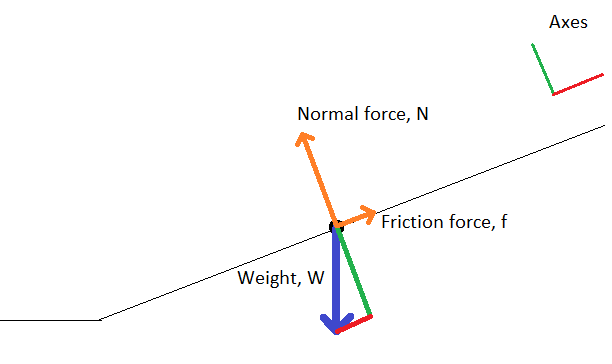Science concepts: friction, force diagrams
A big part of fighting successfully is unbalancing your opponent, in any way possible. Sometimes the unbalancing is purely mental. Usually, it’s structural. Foot sweeps are one of the ways to structurally unbalance an opponent while in “striking mode.” Different martial arts do sweeps differently, but what is the science behind each of the techniques? My position is that, once you understand this scientific concept, you’ll be able to ad lib your own foot sweeps into a fight without having to drill the particular technique dozens of times first. In my opinion, there are only three different situations with which to be concerned.
Definition
Three Situations
I see three different situations regarding leg sweeps. Some martial arts address all of them, some do not. The situations all have to deal with the percentage of weight being supported by the leg to be attacked. Without getting into specific numbers, we can effectively break it down into “high”, “medium”, and “low” weight distribution to the leg.
Sweeps that require a high percentage of the opponent’s weight to be on a leg don’t work nearly as well, if at all, when a low percentage of weight is on the leg. The reverse is true as well. If a technique requires either high or low weight and the person is more in the middle, then maybe you can force the technique, but it’s going to be ugly and probably require some adaptation half-way through. But if the technique you’re using calls for medium weight distribution, then you’re good to go.
The Representative Techniques
(I was supposed to get pictures/video of myself doing the techniques, but it slipped my mind the last time I was at the dojo. Youtube videos will have to suffice for now.)
The Science
f = µN
For examples of different µ values, concrete and rubber have a µ of 1.0 while brass and steel have a µ of 0.51 (much more slippery).
This equation tells us that the friction force is directly proportional to the normal force. The normal force is equal (but opposite) of the force pushing directly into the ground.
 |
| Classic “wedge” force diagram 🙂 |
The orange forces are reaction forces from the components of the applied weight on the ramp. I used a ramp here for illustrative purposes, but I could have used a flat surface with the support leg pushing into the ground at an angle (as is the case with a wide stance). The principles at work are the same in either case.
So, the normal force is equal to the component of the weight that is perpendicular to the surface. The friction force is equal to the component of the weight that is parallel to the surface. This is why I separated foot sweeps into three categories. If a lot of weight is put on one foot, then the maximum friction applied by the ground is high, which makes a foot sweep like the sapu very difficult but the outer reaping throw ideal. In any case, the amount of force, parallel to the ground, that you need to apply to your opponent’s foot to affect a sweep is dependent on how much weight they are putting on that foot and what the surfaces involved are.
The Application
Like I said before, the technique for a good foot sweep varies with the amount of weight the person puts on the leg to be swept. With a lot of weight on the foot, you’d better apply a lot of force to get it to move. That’s why the major outer reaping throw works well here. You can keep their balance on the foot that you strongly sweep away. If you sweep out their main support leg, they fall down. Mission accomplished.
Getting the sapu to work requires a bit more finesse. If they have too much weight on the leg when you attempt the sapu, virtually nothing happens to them. If they have too little weight, then they will simply lift their leg (because they can balance on their other leg) away from your sweep. Luckily, in that case, you can modify your sweep to scoop the leg up into your arms, which puts 100% of their weight on their other foot, allowing you to sweep that one with a big reap.
Each of these sweeps require extra force to be applied if the surface has good traction. However, you can alter the amount of force required by pushing or pulling your opponent, shifting their weight. In practice, I wouldn’t expect anybody to memorize tables of friction coefficients to figure out how much strength to apply a sweep is necessary. You just have to train on a variety of surfaces with a variety of different sized people to start getting a feel for it.
Conclusion
The three techniques I listed here are just scratching the surface of leg/foot sweeps, but hopefully you now have the necessary scientific background to understand why most sweeps work. As with all of my articles, my goal is to provide the necessary knowledge for you to create your own techniques on the fly. This is because in the chaos of a real fight, you’d be lucky to start a technique without having to modify half-way through, let alone planning for a technique and actually have it work in reality the same way that it worked in your head. When you can adapt to the situation using scientifically sound principles, then you will be more likely to do the right thing at the right time.